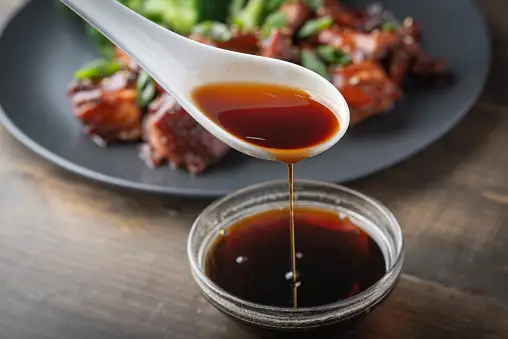With a complex history spanning more than 2,500 years, sweet soy sauce—also referred to as shoyu in Japan and jiangyou in China—has a fascinating past. It was initially developed in China to preserve wheat and soybeans, according to its roots. This original kind of soy sauce, known as “jiang,” was long-fermented and eventually became an essential part of Chinese cooking.
viagogodirect | BucksBingo | GuffyGambling | mpcexchange | BanaAndBean
An Expedition Across Time
Soy sauce started to change over the years and made its way into many Asian cuisines and civilizations. Wheat and soybeans were the main components when the production method was refined. Clear geographical differences were able to emerge as the fermentation process grew more precise and regulated. Particularly, Japan has had a major influence on the development of contemporary soy sauce.
Varieties of soy sauce
- Light Soy Sauce:Known for its well-balanced taste and saltiness, this type is the most popular and adaptable. It is frequently used as a dipping sauce and in stir-fries.
- Dark Soy Sauce:Known for its rich flavor and deep color, dark soy sauce is a staple in marinades and braised foods.
- Tamari:A wheat-free soy sauce with Japanese roots, tamari is a great choice for people who are gluten-intolerant.
- Low-Sodium Soy Sauce:This kind has a softer, less salty flavor and is intended for people who want to cut back on their sodium intake.
- Sweet Soy Sauce:Sweet soy sauce, which has sugar or molasses added, gives food a delicate sweetness and is perfect for drizzling.
The Method of Production
Generally, there are five important steps in the manufacture of soy sauce:
- Koji Cultivation:In this phase, a particular mold known as koji is injected into a mixture of wheat and soybeans. By converting the starches into simpler sugars, the mold starts the fermentation process.
- Brine Fermentation:A mash is made by combining the koji combination with brine. The tastes of this combination emerge during several months of fermentation in enormous vats.
- Pressing:To separate the liquid (soy sauce) from the solid residue, the mixture is pressed after fermentation.
- Pasteurization:To stop the fermentation process and maintain the flavor and quality of the soy sauce, the extracted liquid is pasteurized.
- Aging:To improve the flavor of soy sauce, it can be aged for different lengths of time. Extended maturation times typically yield a more nuanced and subtle flavor.
Soy Sauce Use in Modern Cooking
Beyond its Asian roots, soy sauce has become a gastronomic sensation all around the world. It is an essential component of many recipes, including teriyaki and sushi, as well as traditional American barbecue sauces. Soy sauce is a versatile ingredient in both savory and sweet meals because of its umami-rich nature. Its saltiness may improve the flavor of veggies, meats, and even sweets.
Soy sauce cost elements
Let’s now investigate the variables that affect soy sauce pricing. When buying this adored condiment, customers may make more educated decisions if they are aware of these factors.
- Name and caliber
The quality and brand of soy sauce largely determine its price. Well-known, established brands are typically more expensive because people believe they provide better quality. High-end soy sauces are often more costly since they are produced with premium ingredients and conventional techniques.
- The Aging and Fermentation Phase
The duration of fermentation and maturation is a major factor in how much soy sauce costs. Extended aging of soy sauces results in a more nuanced taste profile and a higher price point compared to shorter-aged alternatives.
- Manufacturing Methods
Traditional techniques of making soy sauce, such as small-batch manufacture and natural fermentation, are generally more expensive than mass-produced varieties that use industrial shortcuts.
- Specialty and Gluten-Free Types
Specialty soy sauces, such as tamari or gluten-free varieties, are more expensive because of their unique manufacturing needs and restricted distribution.
- Stowage
The container of soy sauce can also affect its price. Standard soy sauces often come in less expensive plastic or glass containers, while premium versions may be offered in attractive glass bottles that raise the entire cost.
- Place of Origin
The cost of soy sauce may vary depending on the area in which it is made. Soy sauce manufactured in Japan, for instance, might cost more than soy sauce produced in other nations since traditional methods are highly appreciated there.
Juggling cost and quality
There are several possibilities for customers who want to strike a balance between price and quality. A lot of reputable manufacturers provide reasonably priced soy sauces that are nonetheless quite flavorful. Although high-quality soy sauces are great for special events, regular cooking usually doesn’t call for spending money on these luxuries.
Advice on Selecting Soy Sauce
Examine labels: Take note of the substances that are specified on the label. The addition of preservatives and chemicals may compromise the flavor and nutritional value of some less expensive soy sauces.
Try a variety of soy sauces to see which one best matches your culinary needs and taste.
- Think About Foods:Different kinds of soy sauce work better in some foods than others. Dark soy sauce intensifies the flavor of braised foods, whereas light soy sauce works well for stir-fries.
- Purchase in Bulk:Since the price per ounce or milliliter drops when you buy soy sauce in larger amounts, it might be more affordable.
- Investigate Online Retailers:You may locate the finest offers by exploring the variety of soy sauce selections available on online platforms, including specialized and foreign versions.
In summary, soy sauce is a culinary gem rather than merely a common condiment. It is an essential component of every kitchen due to its versatility and history. Soy sauce gives food all around the world depth and umami flavor, whether you’re looking for a high-end alternative or an inexpensive, go-to one.
ccashstark | charmboutiqe | cloudbytetech | thestellarforge | shippmore


